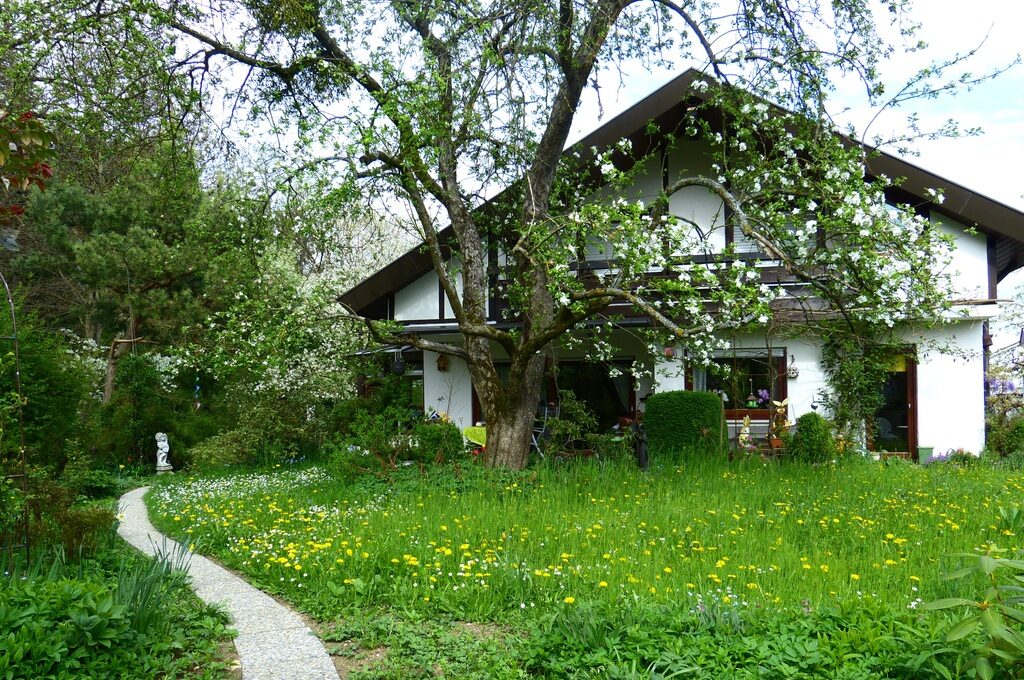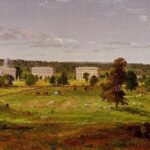Redford, MI. Let’s step off the front porch and head to the backyard. We will return to the front momentarily. Look around at the plants (and hopefully animals) in your backyard – what do you recognize? If you are anything like most Americans, well over 50% of the plants you spot are exotic – perhaps some are even invasive.
There’s much talk about rootedness and localism on this site, but hardly any about the trees in our yards, much less the fox squirrels, northern flickers, or ebony jewelwing damselflies that might frequent your property.
We aren’t all blessed to own over an acre or live in rural settings, but there is much we can do to cultivate local knowledge of flora and fauna and transform that knowledge to love in action.
Perhaps my favorite quote of Wendell Berry’s comes from his essay “The Native Grasses and What They Mean.” Berry writes, “To see and respect what is there is the first duty of stewardship.” Local knowledge is the starting point. What belongs here? What have we plowed under, paved over, and built on? Since we’re in the backyard, let’s start here. What is growing here? What visits either year-long or seasonally?
If you have trees present, what are they? Can you name more than just the genus? Maple? Ok…sugar? silver? red? black? striped? Do you have a relationship with them (Something more than cursing their leaf litter in the fall)? Have you introduced your children to them?
Entomologist Doug Tallamy recommends that every American homeowner replace at least 50% of their turf grass and exotic plants with native ones. Why? Well, do you like birds? Around 96% of all terrestrial birds in North America require insects to feed their young. Birds, along with many other creatures are in trouble. How do you attract insects (yes, you really do want to!)? Provide host plants that provide food and shelter for them. This in turn provides food for birds and other insectivores as well. The oak genus alone supports 534 species of lepidoptera (butterflies and moths).
So you’re not sure what belongs there? Try books, the internet, or your nearby county soil conservation district.
The world is vast, and many problems seem insurmountable or abstract or both. Why not keep your dollars and sweat equity in your watershed? What is a watershed? Any given area of land that drains into a particular body of water. Even if you live in the desert, you inhabit a watershed. What is your watershed? What belongs in it? Find out. Contact a local “Friends of…”a river or watershed to seek answers.
Watersheds are good areas to concentrate on – they are larger than our yards yet still human-scaled (mine contains 48 communities) but large enough to contain varying topography and biodiversity. Do you know the name of your nearest river or body of water (the neighbor’s pool does not count)? What fish, mollusks, and other invertebrates live in it? What fish and plants don’t (Can you say round goby?)? Even though I live in a hub suburb of Detroit, beaver occasionally chew up the young cottonwoods that line the banks of the Upper Rouge River only a minute walk from my house.
By developing relationships with our backyard and neighborhood plants and animals we can come to love our place more and work to protect it – not simply by opposing unwise development, but also by extirpating the plants (especially the plants!) that don’t belong there. Got barberry (berberis)? Buckthorn (Rhamnus cathartica)? Dame’s rocket (Hesperis matronalis)? Get them out of there! We can increase the aesthetic appeal of our neighborhood by smashing the suburban quasi-monocultures of landscaping plants purchased from big box stores and restoring the rightful biodiversity of our ecosystems. We can mitigate the damage we’ve willingly and unwillingly forced upon our common household.
What is the story you can uncover? Behind the natural beauty there thrums a glory ancient and ever-new that generates love for place, if we let it. So, return to the front porch. Take a seat. What’s active at night? Opossums? Skunks? Flying squirrels and bats? Screech owls? How will you know unless you spend time outside? In spring evenings, do you catch the sound of amphibians crooning for love? As I type this outside, I just caught the start of the bioluminescent show of fireflies. Get out and know and love your ecosystem.
Image Credit: PxHere.



